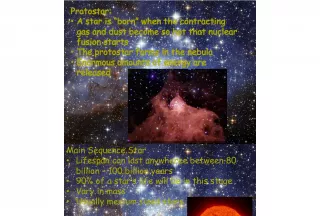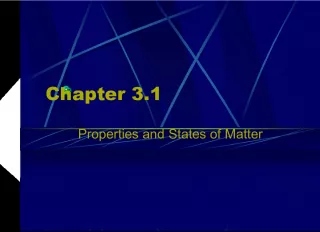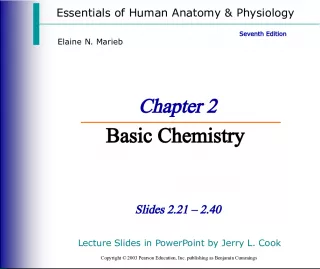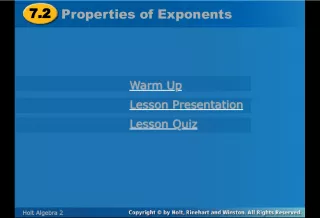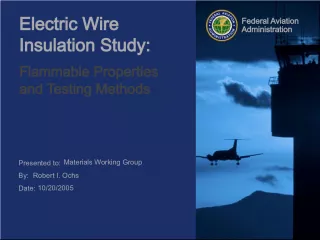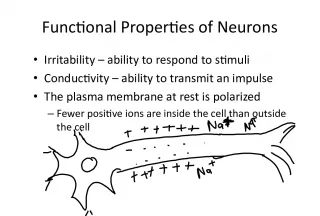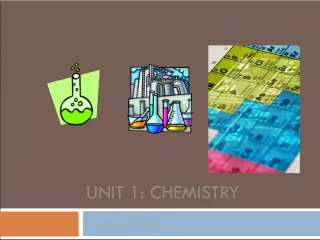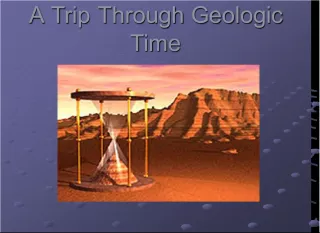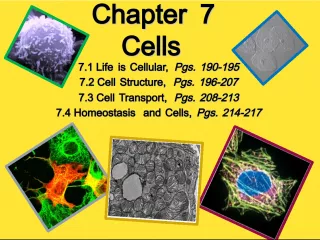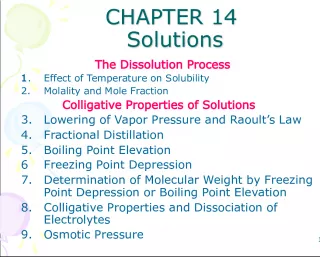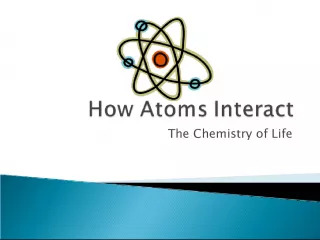Exploring the Life and Properties of Stars
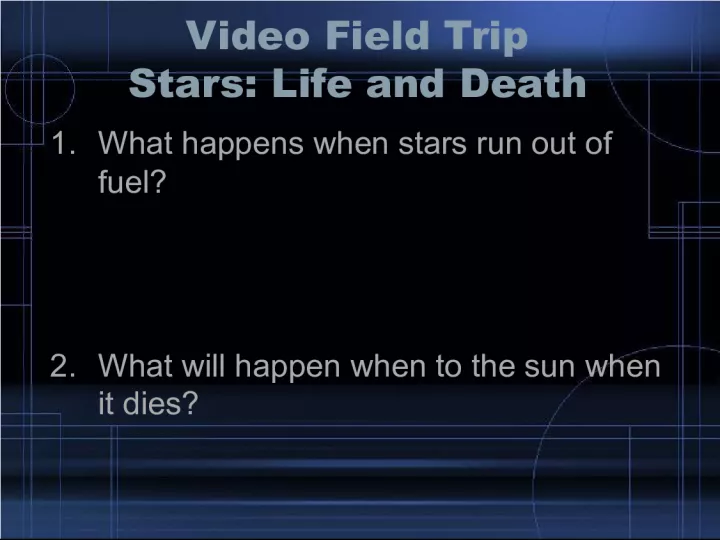

This video field trip covers what happens when stars run out of fuel and what will happen to the sun when it dies. It also discusses the properties of stars, including their temperature, color, and binary pairs. Binary stars are especially useful for determining mass.
- Uploaded on | 1 Views
-
 janice
janice
About Exploring the Life and Properties of Stars
PowerPoint presentation about 'Exploring the Life and Properties of Stars'. This presentation describes the topic on This video field trip covers what happens when stars run out of fuel and what will happen to the sun when it dies. It also discusses the properties of stars, including their temperature, color, and binary pairs. Binary stars are especially useful for determining mass.. The key topics included in this slideshow are . Download this presentation absolutely free.
Presentation Transcript
1. Video Field Trip Stars: Life and Death 1. What happens when stars run out of fuel? 2. What will happen when to the sun when it dies?
2. Properties of Stars Chapter 25, Section 1
3. Characteristics of Stars • Color is a clue to a star’s temperature • Very hot (30,000 K) stars emit their light in the blue spectrum, red stars are much cooler, stars with temperatures between 5000 and 6000 K appear yellow • Binary Stars – pairs of stars, pulled together by gravity, that orbit each other • Binary stars are used to determine the star property most difficult to calculate – its mass • The mass of a body can be calculated if it is attached by gravity to a partner
5. Binary Stars
6. Concept Check • What is a binary star system?
7. Measuring Distance to Stars • Parallax is determined by taking a picture of a star at one time, and another picture six months later; using the angle between its apparent shift, astronomers can determine how far away it is • The nearest stars have large parallax angles, while those of distant stars are too small to calculate • Light-Year – unit used to express stellar distance, the distance light travels in one year (~9.5 trillion kilometers) • Our closest star (besides the sun), Proxima Centauri, is about 4.5 light-years away from the sun
8. Parallax
9. Stellar Brightness • Apparent Magnitude – a star’s brightness as it appears to Earth • Three factors control the apparent brightness of a star as seen from Earth: how big it is, how hot it is, and how far away it is • Absolute Magnitude – how bright a star actually is • To determine absolute brightness, astronomers measure how large the star is, what temperature it is, and what its apparent brightness would be at 32.5 light-years
13. Concept Check • What is the difference between apparent magnitude and absolute magnitude?
14. Hertzsprung-Russell Diagram • A Hertzsprung-Russell diagram shows the relationship between the absolute magnitude and temperature of stars • Main-Sequence Star – This category contains the majority of stars and runs diagonally from the upper left to the lower right on the H-R diagram • Red Giants – a large, cool star of high luminosity • Supergiants – a very large, very bright red giant star • Cepheid Variables – A star whose brightness varies periodically because it expands and contracts, a type of pulsating star • Nova – A star that explosively increases its brightness
15. Hertzsprung-Russell Diagram
16. Concept Check • The H-R diagram shows the relationship between what two factors?
17. Interstellar Matter • Nebulae – clouds of dust and gases in space • Emission nebulae consist largely of hydrogen, they absorb ultraviolet radiation emitted by nearby stars • Reflection nebulae merely reflect the light of nearby stars • Astronomers like to study nebulae because stars and planets form from them
18. Dark Nebula – Horsehead Nebula
19. Assignment • Read Chapter 25 Section 1 (pg. 700-706) • Do Section 25.1 Assessment #1-7 (pg. 706)
